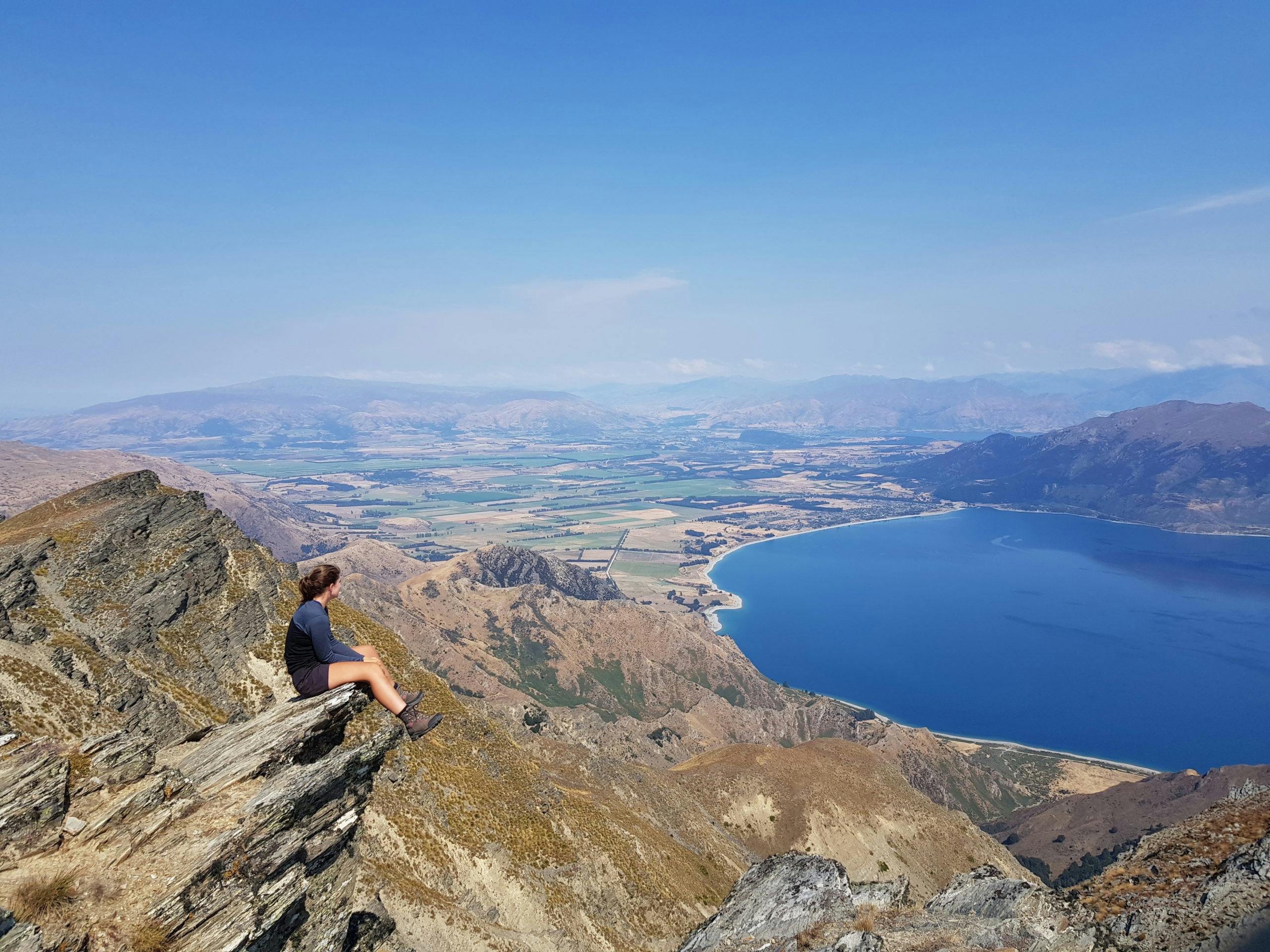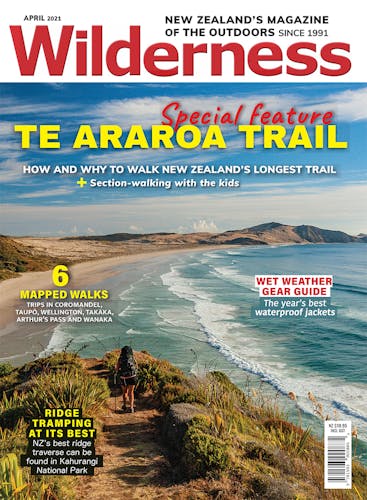Emma Connell walked Te Araroa Trail solo and found herself challenged beyond measure. But it was also the most rewarding and bravest thing she has ever done.
My pack had become a part of me. After two months heading north on the South Island leg of the Te Araroa Trail, I didn’t even bother taking it off over the loose rocks of 1000m Moss Pass. I did enjoy a self-promised chocolate bar though, while reflecting on why I was here, walking the trail solo.
At 17, I had been alone on an Outward Bound course. Students are separated and left in the bush to fend for themselves for up to three days. This experience is said to encourage ‘profound, long-term learning and growth; having the time to sit with yourself can be a great gift to have in a world where we move, with unbridled haste, from one transition to the next’.
In later conversations about this, I found differing opinions. Karl, a colleague who had tramped alone in the North Island many times and solo-hiked America’s Pacific Crest Trail, described his six-month journey as an opportunity for reflection; helping him work out what he wanted from his future. I met Lauren at Kiwi Burn Hut when I had just begun TA journey and she was nearing the end of hers. She said the long stretches of solitude allowed deep meditation and hard consideration about her life. She had been forced to confront anything she might have been running away from because there comes a point when there’s nothing else to think about.
Other solo trampers said the best thing about being alone was the liberating and rewarding freedom it offered: moving at their own pace, eating when hungry, resting when tired, carrying on when energised. Being in complete control of each day’s rhythm is a rare luxury. You can make the most of swimming holes or have hour-long lunch naps. If you can’t make that waterfall or that hut, you’re not disappointing anybody else. You can be opportunistic and completely selfish.
Urges to sing and dance on a whim, to swim naked, yodel in the morning or shed a tear at the beauty of the landscape can be dampened in the company of others and it’s fun to be free of all self-consciousness. Tramping alone is a chance to forego all obligations and social norms, to relax, be eccentric and even go a little feral. It’s also increasingly romanticised, but doing it can be isolating, scary and dangerous.
Scrambling down Mt Angelus several years ago, I slipped on tussock onto a bed of sharp rocks. Combined with the shock and pain was the realisation that I had never before hurt myself like this when I was alone, and I wasn’t prepared for it.
Whilst mixing blood with tears, I limped back to the hut and bandaged myself up. It was sobering, and fear clung to me afterwards.
Nathan Denmark, a seasoned solo tramper who inspired me to head out alone, had a nasty fall when an overhanging riverbank collapsed beneath him. Badly cut up, he said he would have felt a lot safer with a tramping buddy. Fear and panic in the following days overwhelmed him and almost ended his Te Araroa hike. Nathan continued, paying greater attention to his route and surroundings, and I learned to test my footing and recognise potential hazards.
Our experiences also enforce why a PLB is essential (and should not be buried deep in your pack) and to leave clear intentions with trusted contacts.
While a pack that’s too heavy is its own hazard, failing to take the right gear can really stuff things up. There’s nobody to wrap you in dry clothes or share their cooker when the gas runs out. I discovered that not having extra batteries for my torch meant getting stranded in a boulder field on the side of a slip, unable to pitch a tent or cook food as darkness fell in the Richmond Range.
Staying vigilant also applies to skills and knowledge. Not knowing how to read a grid reference or set up your new tent, will bite you. With true independence comes real responsibility, and you are your own best resource.
Layering against cold, maintaining blood sugar and hydration and resting properly all seem obvious. But I’ve ignored clear signs of hunger and fatigue, refused to dig out my raingear in the middle of a wet whiteout and crossed a flooded river that should have washed me away. It’s easy to get into dangerous situations when there’s no-one to second guess your decisions.
Luckily, going solo means there’s no ambiguity around accountability; when you’ve made the decisions you can’t blame others for your failures. You’re forced to learn and grow from each wrong turn.
Another aspect is getting lonely. People told me I’d be more likely to give up. Certainly, deep in the bush, there’s nobody to remind me why I’m there in the first place, or how hard I’d worked to go on such an adventure. But the beauty of the landscapes and the challenge and adventure spurred me on, combined with the thought of family and friends to keep up my motivation.
Even so, there were times when the next hut or the next peak felt just too far or too hard. I had to discover the power of setting incremental goals, providing little rewards along the way; bargaining (“make it to the next swingbridge and you can play that podcast that makes you laugh so hard you snort”). Remembering to smile and laugh; patting my own back and cheering myself on worked wonders. Not having to put on a brave face was refreshing, and just having a good whinge and moan to the trees lightened the load.
Out there, it’s the simple things that make it, and indulgence takes on a new meaning. I always had a good book to read, warm clothes to wear and something sweet to eat. Chocolate and dry woollen socks were luxuries worth their weight in gold.
Emotional self-care was also essential; so much time spent in my own head led to tangled thoughts and greater depths of emotions than I was used to. Without warning, I’d dredge up buried memories, wallow in unexplained sadness and then become buoyed with delight. Accepting this was natural and would pass, helped. I started to write down what had occupied my mind at the end of each day. Offloading and processing my thoughts became therapeutic.
My friend Nathan spent his downtime meditating, stretching and taking photos. If you don’t stay busy, he believed, fed, hydrated and engaged you’ll be restless and lonely.
However, there’s a balance between solitude and people encountered. I looked forward to chatting with new people in huts each night; after a day or two alone, I became withdrawn.
Stepping into the bustling Blue Lake Hut after the deserted D’Urville Valley, it seemed too loud, too unfamiliar: far easier to turn away and block people out. But, after making your own happiness for a while, there’s a joy that comes from genuine friendliness and conversation. Someone on their own is more approachable and I had many wonderful encounters with people I wouldn’t have met otherwise. It gave me the confidence to be fearless in my everyday life when starting conversations and connecting with new people.
A solo tramp of any length is a unique challenge and it won’t always be a walk in the park. However, with the right resources and a few tricks to combat the challenges, it’s a brave and rewarding adventure that can be the experience of a lifetime.
I dare you to try it.







